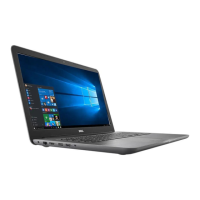Back to Contents Page
Audio Connectors
Audio connectors allow you to connect to amplifiers, speakers, headphones, microphones, sound systems, or TVs for digital audio output.
Types of audio connectors
Microphone connector — Connect a personal computer microphone for voice or sound input.
Line-in connector — Connect a recording/playback device such as a cassette player, CD player, or VCR.
Line-out connector — Connect headphones or speakers with integrated amplifiers.
Rear surround out — Connect multichannel-capable speakers.
Center/LFE surround out — Connect a single subwoofer.
NOTE: The Low Frequency Effects (LFE) audio channel, found in digital surround sound audio schemes, carries only frequency information
(80 Hz and below). The LFE channel drives a subwoofer to provide extremely low bass extension. Systems not using subwoofers can shunt
the LFE information to the main speakers in the surround sound setup.
Side surround sound connector — Connect additional speakers.
RCA S/PDIF connector — Transmit digital audio without the need of analog audio conversion.
Optical S/PDIF connector — Transmit digital audio without the need of analog audio conversion.
5.1 Audio
5.1 refers to the number of audio channels in most surround-sound configurations. A 5.1 audio system uses five main audio channels (front left, front right,
center, left surround, and right surround) and one low-frequency audio channel.
7.1 Audio
7.1 refers to the number of audio channels in high-end surround-sound configurations. A 7.1 audio system uses two additional speakers (rear left and rear
right) in combination with the 5.1 audio system.
NOTE: 5.1 or 7.1 audio may not be supported on all computers.
NOTE: On computers with a discrete sound card, connect the speakers to the connectors on the card.
Related Information
Speakers
Setting Up 5.1 Audio
Setting Up 7.1 Audio
Back to Contents Page

